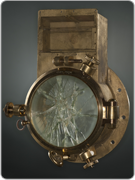Artifacts and eyewitness accounts tell the story of the Empress
May 6, 2014
Weary, injured and in a state of shock, survivors were taken from the site of the disaster to the Rimouski docks in the early morning of May 29, 1914. They brought eyewitness accounts of a tragedy that had claimed more than a thousand lives. Over time, those stories — incomplete and sometimes contradictory — have melded together to form the memory of the Empress.
News of the ship’s fate spread quickly. At 3 a.m., the Pointe-au-Père wireless station sent a dispatch to appear that day in La Presse and the Toronto Daily Star, and the following day in the New York Times. Newspapers across Canada and throughout the world were soon reporting the grim facts.
“Horrible Maritime Catastrophe” was the heading in Rimouski’s newspaper, Le Progrès du Golfe, on the day of the disaster. “The Empress of Ireland, colliding with the SS. Storstad, sinks and perishes completely within ten minutes, dragging a thousand human souls into the abyss.” The report described the “multitude of horribly disfigured, half-naked cadavers” unloaded onto the Rimouski docks by the rescue vessels, and the survivors plucked from the waves “half-dead from cold and exhaustion.” It praised the “bravery” of Captain Kendall in rescuing survivors, and condemned the “unworthy and odious conduct of the crew of the Storstad,” who were described by one passenger as “perfectly indifferent” to the fate of the Empress victims.
The Storstad crew had a chance to tell their story during the formal commission of inquiry that was convened on June 16. They claimed they were moving cautiously through the fog when the Empress suddenly cut across their path, causing the Storstad to broadside the liner. This version contradicted the testimony of Captain Kendall, who accused the Storstad of abruptly changing course and crashing into the Empress. After 16 days of testimony, the commissioners decided in favour of Kendall’s version of events. The Storstad was held to be at fault: its actions, the commission concluded, had caused the collision.
Though the loss of life was widely mourned, the demise of the Empress of Ireland was soon overshadowed by the First World War. The wreck of the Empress lay undisturbed until scuba divers revisited it in 1964. Over the next three decades, divers salvaged numerous items from the ship.
The acquisition of a private collection belonging to diver Philippe Beaudry has enabled the Canadian Museum of History to mount a special, commemorative exhibition a hundred years after the event, thus restoring the Empress of Ireland — the worst maritime disaster in Canadian history — to its rightful place in our memory.
Canada’s Titanic – The Empress of Ireland is on display at the Canadian Museum of History from May 30, 2014 to April 6, 2015.

Porthole (1905) – There may be no more than five Utley portholes from this era in the world today. The glass was likely shattered by the pressure of the air that was forcing its way
out as the ship went down. ©CMH IMG2012-0281-0004-Dm, Frank Wimart